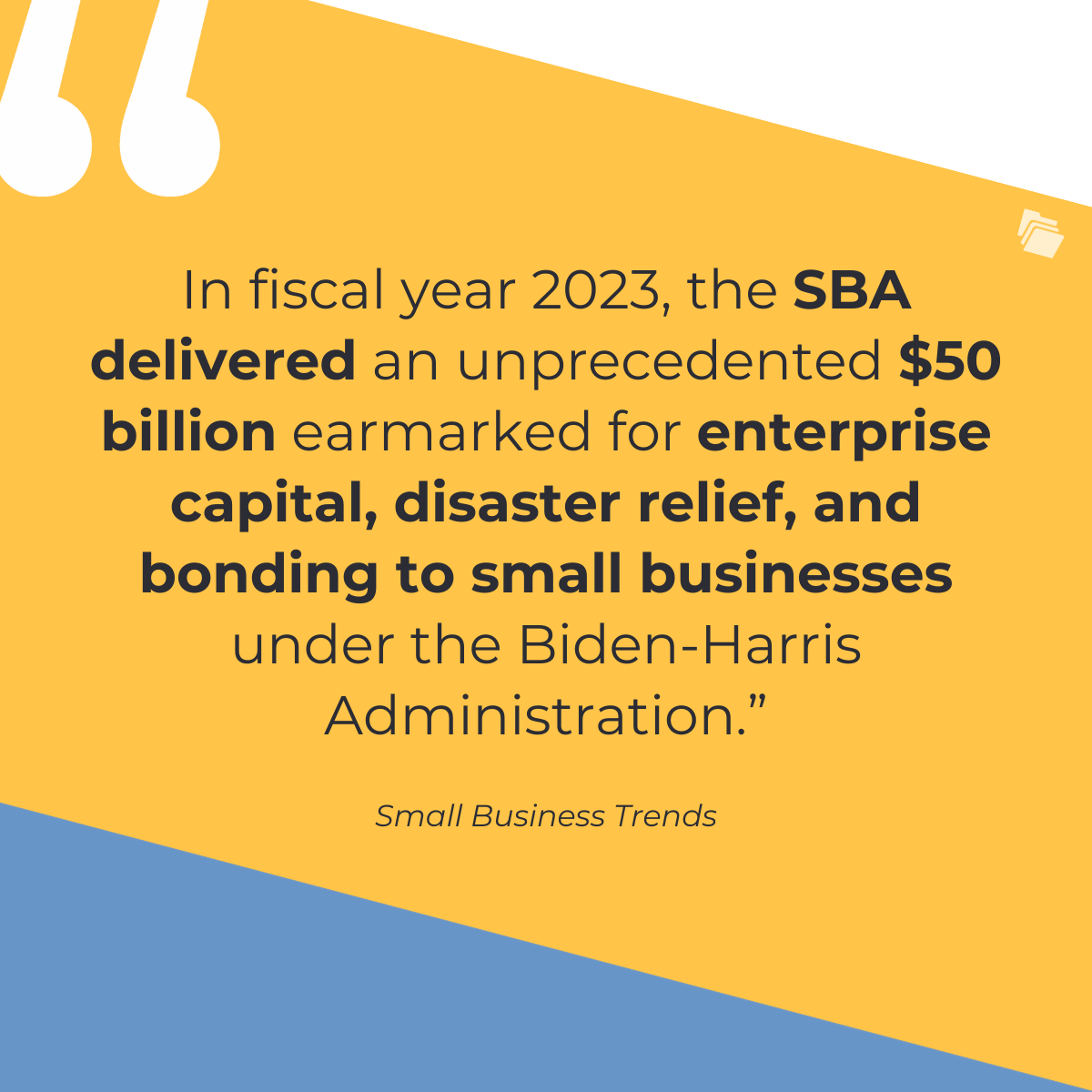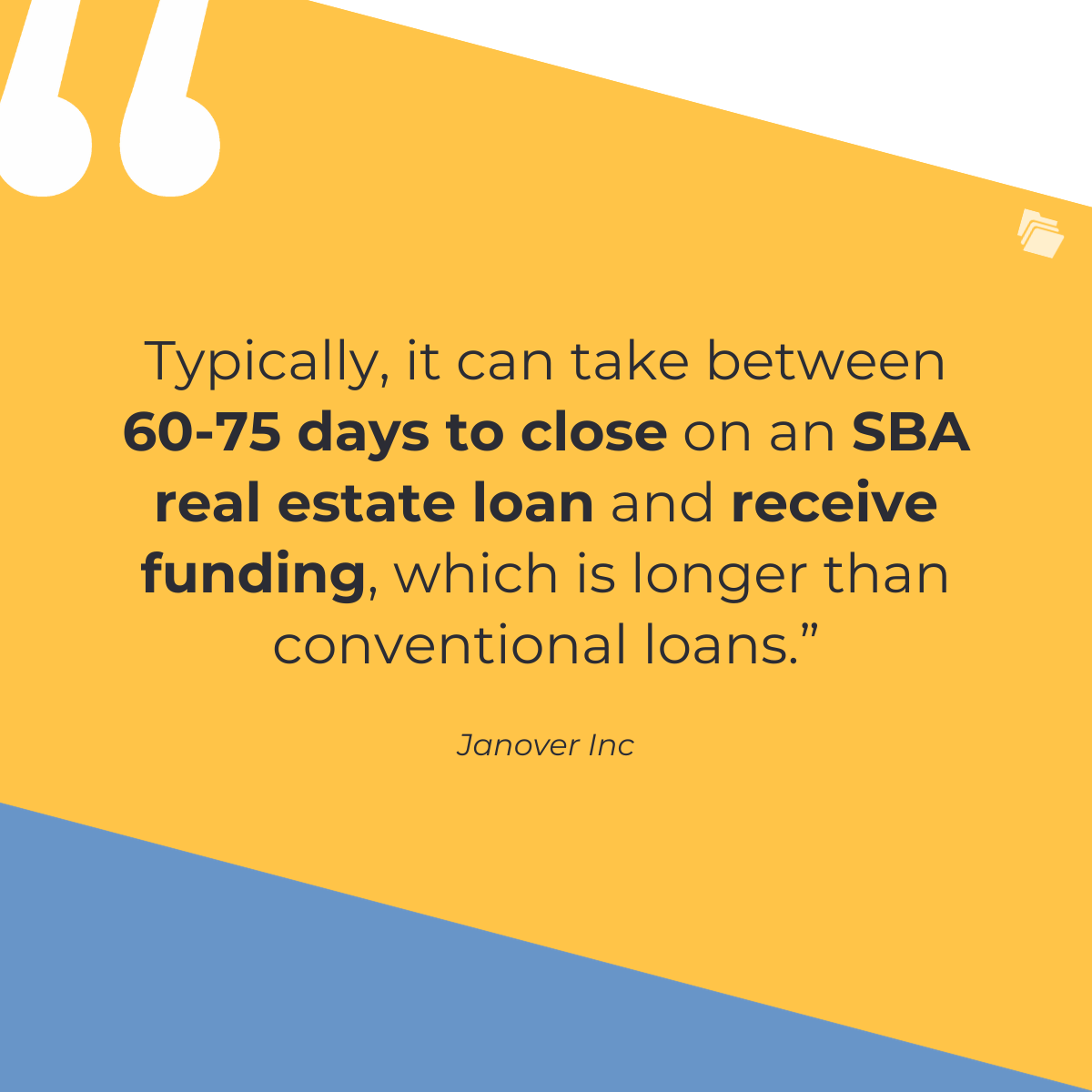SBA 504 Loan Application: Everything You Need to Know
Discover the advantages offered by an SBA 504 loan and obtain the essential funds that will drive your business growth in the year 2024.
Unlock new opportunities and maximize your business potential with SBA loan funds - harness the power of SBA lending.
The Small Business Administration (SBA) 504 loan offers a compelling opportunity for small business owners seeking growth and stability. This loan program, designed to foster economic development within a community, provides long-term, fixed-rate financing for major fixed assets that promote business growth and job creation. For interested borrowers, the first important thing to know is what an SBA 504 loan can be used for.
In fiscal year 2023, the SBA delivered an unprecedented $50 billion earmarked for enterprise capital, disaster relief, and bonding to small businesses under the Biden-Harris Administration, marking a historic milestone in lending and commitment to equitable access to capital. For small business owners, the SBA 504 loan can be instrumental for acquiring real estate, purchasing long-term machinery, or refinancing debt associated with expansion. With over $6.4 billion in 504 loans distributed across more than 5,900 loans for equipment, real estate, and debt refinancing in 2023, this program is a key player in the small business financing landscape.

The impact of the SBA 504 loan is significant, contributing both to the growth of businesses and the national economy. This guide provides an overview of SBA lending and explains exactly what you can do with SBA loan funds.
Understanding SBA 504 loans is crucial for small businesses looking to finance the acquisition of major fixed assets like real estate and equipment. The SBA 504 loan program is crafted to aid in business growth and job creation. It offers long-term, fixed-rate financing that is facilitated through a partnership between certified development companies (CDCs) and participating lenders.
The SBA 504 loan functions as two separate loans. A traditional lender provides up to 50% of the loan amount, while a CDC provides up to 40% of the loan, which is guaranteed by the SBA. The borrower is generally required to contribute a minimum of 10% equity. For new businesses or those buying special-purpose properties, a higher equity contribution may be necessary. The maximum loan amount typically stands at $5 million but can reach $5.5 million for eligible energy projects and small manufacturers.
Key features of SBA 504 loans include:
To be eligible for an SBA 504 loan, businesses must:
As part of its founding purpose, the SBA 504 loan program has been a catalyst for economic development, with goals including job creation, where a business must create or retain one job for every $75,000 of SBA financing. Beyond job numbers, the program encourages projects that improve local economies, support manufacturing, and enhance competitiveness through modernization, such as incorporating robotics or updating facilities to meet health and safety standards.
SBA 504 loans serve as a potent tool for small businesses to purchase or modernize various types of fixed assets. The 504 loan program focuses on financing the acquisition and modernization of physical assets, which include:
Businesses planning to apply for a 504 loan should be prepared for a structured process involving a partnership with a CDC and meeting specific eligibility criteria, such as operational for-profit status in the U.S. and a net worth below $15 million, among other requirements.
It is important to note that 504 loans cannot be used for working capital, inventory, or consolidating debt, which delineates their purpose toward long-term asset growth and business expansion. For more flexible funding options, small businesses might consider other SBA loan programs, like the 7(a) loans, which can cover a wider range of business expenses.
The SBA 504 loan program is a valuable resource for small businesses. However, SBA 504 loans come with specific restrictions and limitations businesses must observe to ensure compliance with SBA guidelines.
Prohibited uses of SBA 504 loan funds include:
While SBA guidelines prohibit the use of 504 funds for debt consolidation or repayment generally, there is a narrow range of exceptional circumstances to this rule. Businesses can use SBA 504 loans to refinance existing debt if the refinanced debt is at least six months old and was originally used for eligible expenses related to business operations, such as real estate or long-term machinery. At least 85% of the original loan must have been for SBA-eligible expenses.
Additionally, the business must have been operational for at least two years, and all payments for the debt to be refinanced must be current for no less than one year before the application. Recent changes now permit the refinancing of existing SBA loans under this program. Businesses need to demonstrate that the refinancing will provide a "substantial benefit," often quantified as a 10% reduction in monthly payments, to ensure eligibility under the SBA guidelines.
To remain compliant with SBA guidelines, borrowers must:
The SBA 504 loan process involves multiple parties, including a CDC and a third-party lender, which can make the application process lengthy and complex. Typically, it can take between 60-75 days to close on an SBA real estate loan and receive funding, which is longer than conventional loans.

Businesses looking to apply for SBA 504 loans must be for-profit, do business within the U.S. or its territories, have a tangible net worth of less than $15 million, and not have an annual net after-tax income exceeding $5 million for the two years preceding the application.
Businesses must understand these limitations and ensure that their planned use of the funds aligns with the SBA's goals of promoting business growth and job creation. For detailed guidance and to explore the full list of limitations, businesses should consult directly with the SBA or a participating lender.
The SBA 504 loan application and approval process involves several detailed steps. Applicants must initially work with a CDC for eligibility assessment, then gather extensive documentation on their business's financials, project details, and planned use of funds. Post prequalification, the full loan application undergoes rigorous scrutiny from the CDC and then the SBA, which considers factors such as the business’s creditworthiness, job creation potential, and project viability.
Key steps in the application process include:
Some important factors influencing loan approval are:
FileInvite's secure file sharing and document collection platform can substantially streamline the SBA 504 loan application and approval process for lenders. By automating the document collection process, FileInvite reduces the administrative workload involved in manually collecting, tracking, and storing documents. It enables lenders to send automated requests for documents and receive real-time updates when documents are submitted by applicants, ensuring no delays in the application process.
Moreover, FileInvite's centralized platform allows for easier collaboration among all stakeholders. It ensures that lenders, CDCs, and applicants can access the latest versions of documents, which helps in maintaining the integrity of the application process.
Importantly, FileInvite enhances compliance through its secure portal, which is designed to handle sensitive financial documents, providing both encryption and access control. This is crucial for maintaining the security of the applicant's personal and business information. By integrating with existing lender systems and offering a single portal for document management, FileInvite minimizes the potential for errors and omissions, leading to a more efficient approval process.
To learn more and request a demo, visit FileInvite today.
Discover the advantages offered by an SBA 504 loan and obtain the essential funds that will drive your business growth in the year 2024.
Discover the process of applying for an SBA 504 loan, with details on eligibility and necessary paperwork. Expect an average application timeline of...
Discover the benefits and limitations of SBA loan guarantees designed to assist small businesses.
Eliminate the monotony of back-and-forth emails and inefficient systems when gathering client information. Get hours back each week as FileInvite handles the most time-consuming work for you.
Get started in as little as 5 minutes.